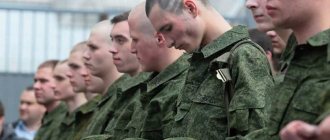MIP online legal encyclopedia - » Criminal cases - comments from a Federal Judge / MIP Law Group » Punishment » Jury trial (assignment of punishment if the jury verdict is lenient) - comments from a Federal Judge / MIP Law Group
Sign up for a consultation with the head of the criminal department. We specialize in Article 65 of the Criminal Code of the Russian Federation. Professional explanations. Unlimited consultation time
Trial by jury - free answers from lawyers online
The procedure and conditions for sentencing by courts for committing criminal acts are regulated in detail by Russian criminal law. The assignment of punishment to a defendant when his case is being considered by a jury, in particular when the jury has rendered a verdict of leniency, has some peculiarities. This publication will reveal the procedure for imposing punishment by the court, taking into account the jury's verdict of leniency, the concept and types of verdicts, and the possibility of appealing a court verdict passed on the basis of a particular jury verdict.
Jury verdict
First of all, in this article it is necessary to expand on the concept of a jury and explain what a jury verdict means. According to the law, panels of jurors are created in the Supreme Court of the Russian Federation (RF Supreme Court), in courts of general jurisdiction at the level of republics, territories, regions, as well as in military courts of districts and fleets. A defendant has the right to a trial by jury only if he is accused of a crime within the jurisdiction of these types of courts. From June 1, 2022, according to the latest changes to the Code of Criminal Procedure, jury panels will also be created in district courts.
Based on the Federal Law on Jurors of August 20, 2004, which establishes the concept of these participants in legal proceedings, any citizen who has reached the age of 25, is fully capable and does not have an unexpunged or outstanding criminal record, with some exceptions, can become a member of the jury. In cases specified by law, a candidate for jury may recuse himself. The jury is selected by the court from among the citizens included in the population lists using a random sampling method, the procedure for which is established by Article 326 of the Code of Criminal Procedure of the Russian Federation. It should be said that, unlike a professional judge who decides legal issues themselves, jurors are ordinary citizens who make a decision on a case based on personal everyday experience and common sense.
The procedure for criminal proceedings with the participation of a jury is established by articles of Chapter 42 of the Code of Criminal Procedure of the Russian Federation.
The jury must participate in the entire hearing of a criminal case. Based on the results of the consideration of the case, they are obliged to answer the judge’s questions about whether it has been proven that the act of which the defendant is accused took place, whether it was actually committed by the defendant, whether he is guilty of this act.
Members of the jury are not authorized to qualify the crime or determine the punishment - this falls within the competence of only the presiding judge.
A verdict is a decision on the guilt (innocence) of the defendant, which is made by a jury based on the results of their consideration of a criminal case. During the deliberation, the jury can make the following types of verdict: guilty (“guilty”) or acquittal (“not guilty”), as well as a verdict of leniency (the defendant is recognized as “guilty, but deserving of leniency”). Based on the verdict, after its official proclamation, the presiding judge sentences the defendant. A verdict of acquittal by a jury is strictly binding on the judge - in this case, he must pronounce a verdict of not guilty, whatever his personal opinion on the case. Verdicts declaring defendants innocent, as statistics show, are made by jury courts in 17% of cases (while acquittals in other courts are extremely rare, the share of such verdicts is only about 1%).
If the jury announces a guilty verdict, the judge pronounces a guilty verdict (although if the judge decides that there are no signs of a crime in the defendant’s actions, he can also be acquitted). If the jury returned a verdict of leniency (in essence, this is a type of guilty verdict), this fact entails a guilty verdict, but at the same time significantly affects the limits of the punishment imposed by the court.
Procedural “filters” and the struggle for truth in a jury trial
You have to fight for the truth in a jury trial. Or rather, in a jury trial one must fight not even for the truth itself, but for the attempt to convey it. In this case, the mechanism of law and its application is activated.
We must make a reservation: in our opinion, the task of a scientist in the field of criminal procedure is not only to study reality, but also to create certain legal provisions that can ensure the study of the truth. <…> Thus, if reality does not provide a correct investigation of the truth, then science has every right and duty to indicate principles that are more consistent with the requirements of justice. L. E. Vladimirov
A few thoughts about the institution of judicial truth. In the rhetoric of understanding truth as a certain value ideal, there are several points of view. Despite their apparent polarity, in reality they are almost identical. Each of them represents relatively identical judgments of different level, but identical in content, ideas about what truth is the cornerstone of criminal proceedings. The reason for such judgments lies, first of all, in the peculiarities of human consciousness, which strives to understand objectively existing laws, but at the same time always perceives and interprets them in its own way.
There is an opinion that interest in establishing the so-called objective truth is the lot of the prosecution or court, which often replace banal professional interests with the desire to achieve it. It should be noted that lawyers are also not without illusions regarding the idea of truth as an unconditional Absolute, the desire for which is fueled by their own ideas about justice and the need for the proper implementation of the procedural function.
Refusal of the truth for a participant in proof means a complete loss of hope for the ability to understand the world around him. This is an admission of powerlessness in the face of uncontrollable reality. The subject of proof cannot allow this, and therefore clings to the concept of truth as the only available means of confronting the frightening unknown. Belief in achieving truth lies at the level of the unconscious.
All discussions in the professional community about whether truth is needed, even with a primary need for discussion and a desire to hear polar opinions that allow an alternative point of view about its possible unnecessaryness, will ultimately still come down to the conclusion that the subject’s lack of desire to achieve truth is immoral. And in the future, it is absolutely not important what is behind the desire to know this truth - whether it is money, professional corporate spirit, career interest or moral duty. Hence we encounter different types of truths - objective, formal, contractual, truth that is the result of a court agreement, truth arising from a complete and comprehensive study of the circumstances of the case, etc., etc. It turns out that truth is, in many ways, a matter of faith. Otherwise, the whole mystery of legal proceedings loses its meaning. However, faith is a moral category that is difficult to analyze, whereas law was invented by people.
Why are jury trials not very popular and trusted in Russia? The answer to this question must be considered through the prism of the concept of truth. It is clear that the selection of a jury occurs largely on the authoritative advice of a lawyer, whose opinion is trusted by the person being persecuted by law enforcement agencies. Practice shows that lawyers who have already participated in jury trials and lost are not particularly keen on such court hearings again. They know: the question of faith, which operates in ordinary courts, does not help here, because in a jury trial one must fight for the truth. Or rather, not even for the truth itself, but for the attempt to convey it. In this case, a different mechanism is activated—law and its application.
It can be admitted without exaggeration that evidence in a jury trial is a continuous struggle for the facts that professional participants in the process want to convey to the attention of jurors. Despite the presence in the Code of Criminal Procedure of the Russian Federation Art. 335, which in an extremely abstract form regulates the procedural foundations of evidence in a jury trial, practice has long had its own rules of the “game” that dictate the boundaries of the evidentiary activity of participants in a court hearing. Their differences in different regions are not significant, but our research has shown that where jury courts appeared earlier and have been functioning for a long time (since the mid-90s), such restrictions are more stringent than in those regions of the Russian Federation in which juries have been dispensing justice for a short period of time (2003-2005). The attribution of many circumstances in a case to questions of fact or law most often occurs artificially, following the already ingrained fashion in the courts for “template” evidence. In this sense, presiding officers often act on the principle of “it is better to prohibit than to allow,” fearing the reversal of a sentence passed after such a lengthy and costly judicial procedure in every sense. This does not mean that such restrictions apply only to the defense, and that the presiding judge and the jury “play by the rules” established by the prosecution, which, in a good sense, have monopolized the procedural rules on the distribution of the burden of proof. The mechanisms of judicial competition, presented in a disadvantaged form, sometimes work. Their “work” is more often manifested in the ability to influence the cognitive sphere of jurors in different ways and to dissociate various procedural “filters” established by law and established judicial practice, which, as we know, has no precedent in Russia, but has force.
Studies of the Russian modern model of jury trials, the root of which grows from the general principles of the criminal process and which has absorbed both positive and negative aspects of the domestic judicial system, have shown how strong the restrictions are that do not allow the parties to resort to various methods of influencing the jury.
The problem of procedural “filters” is complex. It cannot be regarded as an unambiguously positive or negative phenomenon. It is associated with the activities of the presiding judge, who independently determines the boundaries of the study of certain facts in order to: 1) block the jury’s access to obviously unacceptable and (or) irrelevant facts; 2) protecting the jury from any information that could have a negative impact on them, including information that negatively characterizes the defendant. This activity is prescribed by law and does not require further explanation. There is, in fact, one more aspect that in the practice of considering cases in jury trials becomes of utmost importance. It concerns the so-called “filtering” of information received by the presiding judge through the prism of its: a) relevance to the jury; b) the possibility of interfering with the normal course of thinking of the board; c) the ability to create reasonable doubt in the minds of the jury.
Thus, the above prerequisites for the emergence of procedural “filters” make it possible to divide the latter into legal and semi-legal, which, in turn, may indicate acceptable and unacceptable attempts to limit judicial competition. Their analysis cannot be carried out in isolation from the evidentiary activities of the prosecution and defense in a jury trial.
The array of problems, the study of which is associated with the search for opportunities to overcome procedural “filters,” requires at least a superficial coverage of them in the context of the use of special knowledge in court. The chances of professional lawyers and jurors here are absolutely equal - neither one nor the other understands special issues in detail, and sometimes the latter may be even in a more advantageous position, having the appropriate education. The thesis that jurors are more prone to doubt than professional judges is confirmed by a comparative analysis of the practice of trying cases with and without juries. Knowing this, the presiding officers try to protect the jury from any such doubts, sometimes acting to the detriment of the interests of justice. Many, even very dubious, arguments of experts are taken on faith, the validity of the chosen methodology fades into the background, and it is somehow not accepted to talk about expert errors in a Russian court. Because the formulaic argument that “the expert works in a government agency, has a higher education and has worked in a certain specialty for n number of years” seems to many presiding officers more convincing than the “review” of an authoritative specialist, the inclusion of which is requested by the defense . So.
1. The first problem that immediately catches the eye when studying judicial practice is the “blurring” of the boundaries outlining the list of issues derived from the powers of jurors. Once again I will emphasize the influence of judicial conviction on the subject of judicial proceedings, the scope of which also depends on subjective factors, such as judicial professionalism and legal thinking, often burdened by a quasi-normative understanding of the law. By the way, a broad interpretation of the norms of the Code of Criminal Procedure of the Russian Federation, in particular Art. 335, dedicated to the legal regulation of evidence in a jury trial, is inherent not only to judges, but also to public prosecutors.
2. Among the second negative factor, it is advisable to name the situation of conducting examinations based on case materials, which is quite common in expert activities. Take forensic research, for example. The fact is that the first examination carried out in a case in very rare cases suits the investigation or representatives of the state prosecution. You need to understand that we are talking about complex criminal cases, the proof of which is not limited to the use of one or two procedural means. In the case of the first forensic medical examination, the expert or experts work directly with the corpse, which is subsequently subject to burial. Exhumation is a rare phenomenon in forensic investigative practice. The second and subsequent forensic medical studies are carried out on the basis of an analysis of the volumes of the criminal case, in particular such documents as the conclusion of the previous examination, protocols of interrogation of the accused, experts, etc. State prosecutors do not focus the attention of the jury on such details as the objects of the expert examination, or rather the difference between them. Thus, jurors rarely receive clear information about in which cases the experts worked with the corpse and in which with the case materials. Differences in the professionalism of lawyers also often lead to a default about these most important circumstances for assessing the reliability of the conclusion. As a result, the jury evaluates each expert’s conclusion intuitively, without absolutely understanding how this evidence came to light. In this case, a link in the chain of one of the stages of proof is artificially removed - the evidence is not evaluated separately, but immediately in its entirety. This undoubtedly leads to a violation of the logic of evidence and creates obstacles for the jury to evaluate evidence.
3. Referring to the fact that the jury is establishing the facts, the presiding officers extend this imperative to the examination of examinations. Hence the vicious practice of conducting “rehearsal” interrogations of experts in jury courts, as well as blocking any information about the methodology used by the expert. Has it lost its relevance, does it comply with current regulations or achievements of science and practice? — all these questions, in the opinion of professional judges, should not concern the jury. Sometimes lawyers, who are prohibited from speaking about the reliability or accuracy of expert techniques, make attempts (mostly unsuccessful) in the debate to convey to the jury at least some of the “forbidden” information. Does this help the jury? Rather, it is confusing.
It is known that the presentation of evidence and its examination are different concepts. When "live" evidence is presented to a jury, can the jury examine it? Yes, they can examine the witness, study his face, facial expressions, gestures, and monitor changes in intonation. In a word, independently evaluate the reliability of the evidence. But can a jury evaluate the reliability of an expert report read aloud by a prosecutor or defense attorney? To take it on faith or not - yes, to evaluate it - it’s unlikely. This is why there is an adversarial process with its idea of not just stating rights, but the opportunity to exercise such a right at any time. This is an opportunity to present an equivalent argument. Not in the sense of words, but in the sense of action. When presenting forensic medical examination reports to a jury, a conflict of scientific opinions is not entirely a positive phenomenon. However, it is even worse when the jury knows nothing about this conflict, and those rare echoes that reach them during interrogation or debate are unlikely to be taken seriously by them, and more often they simply fall on deaf ears. That is why the jury must be present during a scientific dispute, hearing scientific opinions not from lawyers, but from the experts themselves. The “battle of authorities” is more important for them than the skillful pronunciation of special terms by a lawyer or prosecutor. If this is not the case, there can be no question of genuine competition. At one time, Professor L. E. Vladimirov called this “selection of expertise in court,” believing that public expertise has a clear advantage over other forms of presentation of special knowledge, especially written ones, since “written expert opinions rarely have scientific merit, are drawn up routinely, monotonously, carelessly, without sufficient motivation. In a letter, it is much easier for an expert to hide the shortcomings of his expertise and negligence in studying the case” 1. “Selection of expertise in court” is not just an interrogation of the expert by the parties. This is the right granted to the defense or prosecution to bring knowledgeable persons into the trial so that they also have the opportunity to question the expert or express their judgment about the quality of the research conducted. In a word, scientifically object to him.
During the trial on charges of murder against S. and N., jurors were de facto excluded from examining expert reports. In the opinion of the lawyer who defended N., the “weak point” in the evidence base of the prosecution was two forensic medical examinations. The primary examination, carried out individually, established the lower and upper limits as 24 and 30 hours, that is, it determined that the death of the victim occurred more than 24 hours before the recording of cadaveric phenomena. However, this conclusion contradicted the version of the investigation, since it violated the time factor in the mechanism of committing the murder. Then the investigation appointed a commission forensic medical examination, the findings of which substantiated the version of the prosecution authorities and determined the minimum limit at 18 hours, and the maximum at 26. During the interrogation of the expert, the lawyer pointed out numerous violations that were committed during the examination of the corpse and the conduct of this examination.
The state prosecutor had no choice but to file a petition to order a second commission of forensic medical examination. The repeated commission examination, the conclusion of which was not very different from the conclusion of the initial commission examination, raised many questions from the lawyer. At the initiative of the state prosecutor, an expert who participated in its conduct was invited to the court hearing. The lawyer filed a counter-motion for the interrogation in the presence of jurors (in parallel with the interrogation of an expert called at the initiative of the prosecution) of two doctors of medical sciences. As the lawyer explained to the court, interrogation of specialists is necessary to assist the defense in posing questions to the experts. Since the experts were in the courthouse, the state prosecutor did not object to the interrogation, but expressed fears that the issues that would form the essence of their testimony would concern the methodology of the examination. Therefore, according to the prosecutor, specialists should be questioned in the absence of jurors.
During the interrogation of specialists (without a jury) by a lawyer, it turned out that during the re-examination, the experts did not take into account an extremely important circumstance - the corpse was covered with a blanket when discovered. Experts explained that the presence of a blanket on the body is a significant factor when using the technique indicated in the conclusion - Henssge's nomograms. In this case, a correction factor must be applied, which is expressed numerically as 2, that is, the body weight of the corpse must be multiplied by 2. The chairman asked the specialist if he thought that the experts had used the wrong methodology. The specialist answered the question negatively, noting that the expert’s chosen method for establishing the DNS using Hensge’s nomograms is one of the most accurate.
The court decided to deny the defense's request to question specialists in the presence of jurors. From the protocol of the court hearing: “As follows from the arguments of lawyer K. in support of the petition, he questions the methodology of the examination. This is not within the competence of jurors. Experts P. and D. questioned the validity of the methods used in the examination and the competence of the experts, which, according to the law, is the basis for the challenge of experts, and if the challenge to the expert is granted, the examination conclusion can be assessed from the point of view of admissibility. Issues of admissibility of evidence are resolved in the absence of a jury. In addition, during questioning, both experts and specialists use numerous professional terms, which can mislead the jury. The specialists did not take part in the examination, and their judgments are actually an assessment of the examination, which is not within the competence of the specialist. The defense can use the knowledge obtained from the experts during subsequent questioning of the experts.”
Of course, such “logic” of the presiding officer is unacceptable. It sees the deprivation of the defendant's right to defense, as well as disrespect for the criminal procedural law (juries are excluded from the list of subjects of evidence assessment; the concepts of expert incompetence and the unreasonableness of his conclusion are replaced), which endows the figure of a specialist with the corresponding procedural status, which is manifested in the absurdity of the phrase about “misleading the jury.” What is striking is the presiding officer’s confusion of such concepts as “expert incompetence” and “incompleteness of research,” which “can be expressed: in the incomplete identification of essential features of the object; not using all research methods known to the expert; ignoring certain properties of objects or their interdependence; neglecting the rules and conditions for the use of expert research methods and technical means” 2.
The prosecutor read out to the jury the conclusions of all the forensic medical examinations available in the case, then proceeded to question the expert. Most of the questions asked by the state prosecutor were of an abstract nature and contained demands for clarification of special terms, such as: “histological preparations”, “blunt objects”, “grievous harm to health”, etc. In essence, the jury listened to a lecture on theory forensic medicine. At the very end of the interrogation, the prosecutor, without focusing on the numbers, carefully inquired about the difference in establishing the age of death when conducting various examinations. The expert explained that previous examinations did not take into account all the factors and informative signs that influence the determination of the duration of death. The jury did not know what informative features were being discussed. Nobody deciphered this concept for them. As a result, the jury found the defendants guilty and not deserving of leniency.
The means used in the struggle for truth are not always justified. In some cases, the creation of a procedural “filter” occurs artificially and is a consequence of incorrectly chosen judicial tactics. This is explained by the psychological attitude of the subject of proof and is associated with the so-called “vicious circle” phenomenon, when the belief in truth that exists at the unconscious level encourages the subject of proof to take active action, but it is also sometimes the root cause of tactical mistakes made. All subjects of proof “sin” with this, but more often – defense attorneys.
It is unlikely that many lawyers, carrying out an active defense, seriously thought about the harmfulness of filing a large number of petitions to declare evidence inadmissible. It is noteworthy that many defense attorneys, presenting themselves as some kind of “orderlies” of a criminal case, really think that in this way they protect the jury from unnecessary information and contribute to the adoption of a fair verdict. Is this tactic correct? The behavior of lawyers who literally overwhelm the court with their requests for inadmissibility of evidence is not uncommon in ordinary courts. Sometimes such long, multi-page statements, where admissibility is intertwined with reliability, are read out for hours by defense representatives in meetings. In general, this tactic is very prosaic and is explained by the desire of lawyers to preserve and duplicate for a higher authority their assessment of the investigation’s activities in the hope that the appellate (cassation) instance will pay attention to the violations and take this into account when making a decision. It is not often that defense attorneys actually expect the court to grant such motions. Their task is to give a negative assessment of the investigation’s activities, question the validity of the accusations made and convey their position to a higher authority as much as possible. But in a jury trial, such tactics may be wrong.
Several years ago, a high-profile trial took place in one of the central Russian cities. The defendant is former federal judge K., who, according to investigators, killed his ex-wife and burned the body. During the trial, the judge, at the request of the defense, excluded from the materials the protocol of the inspection of the scene of the incident with a diagram and photo table, which was the only carrier of the initial information: the condition of the corpse at the time of discovery, features of clothing, the situation at the scene of the incident and the surrounding area, etc.
It is necessary to understand what the jury lost when they were not presented with this protocol?
1. Perhaps the jury did not know what defendant K was charged with. Of course, this is absurd. The jury knew in detail about the circumstances of the discovery of the corpse, at least from the testimony of a witness who was interrogated by the prosecution.
2. The jury did not see the mutilated corpse. Cases when the jury is presented with photographs of the murdered for viewing are very rare. In this case there can be no doubt that the presiding judge will prohibit such photographs from being shown to the jury. Subsequently, this guess was confirmed when the presiding judge refused to show the jury a photographic table attached to the forensic medical examination report, citing the desire to protect the jury from strong emotional influences.
3. The jury probably did not know which items of clothing were retained on the corpse. This is not correct, since the investigator carried out the seizure of clothes in the morgue. In addition, the protocol for identifying the corpse also contained information about clothing, jewelry, etc. It could hardly be expected that they would also be excluded from the case file.
4. The jury did not know the nature of the stab and thermal injuries found on the corpse. Of course it's absurd. Preserving the conclusions of forensic medical examinations is a strategy for the prosecution, which in the presented situation is simply impossible for a lawyer not to guess about.
Now let's see what the defense lost, at whose request the report of the inspection of the scene of the incident with the diagram and photo table was excluded from the case? Moreover, throughout the entire trial, the defense consistently substantiated the version of the falsification of the investigation, expressed in the creation of new, deliberately false evidence.
1) During the inspection of the scene, a fragment of polymer material was discovered. From the conclusion of the forensic medical examination it follows that the fragment was soldered to a fragment of a trouser leg, the expert removed it and gave it to the investigator. The investigation recognized the fragment as the burnt remains of a canister, which K., according to the prosecution, bought at a gas station shortly before the murder in order to hide traces of the crime.
2) At the court hearing, the expert confirmed this circumstance, but was unable to show the place of soldering on fragments of clothing and answer the question why on these fragments there is nothing indicating the place of soldering, and why there are no traces of soldering on the polymer material.
3) When examining a fragment of polymer material in court (without the participation of a jury), it was visually established that the surface of the latter was covered with soldered branches and leaves, and neither the surface nor the edges of the polymer material had anything resembling traces of soldering with fabric.
4) Based on these circumstances, the defense put forward several private versions, the main one being the following. The examination was carried out on a fragment of plastic that has nothing to do with the corpse. At the same time, the photograph clearly shows that the fragment is located on the grass two meters from the corpse and could not be connected to it.
5) The lawyers filed a motion to summon in court the investigator who was inspecting the scene of the incident and the corpse when the alleged fragment of a plastic canister was discovered. He replied that he did not remember whether a fragment of the canister was soldered to the trouser leg of the corpse or not.
6) Following the stated logic, the lawyers filed a motion to summon the specialist who took the photographs to the court hearing in order to inspect the disk with the recording of the inspection of the crime scene together with him. The main question that interested the defense was formulated as follows: “Among the 18 photographs (numbers indicated), is there at least one where a piece of red plastic is attached to the remains of the trousers?” The specialist replied that the object was located at a distance from the body. To the question: “In the photographs (numbers are indicated), are there images of a red fragment?” came the answer: “I did not see a red object at the scene.”
7) The defendant’s lawyers filed a motion to admit as admissible evidence a disk depicting the scene of the incident and a photo table. According to the defense, the disk with images and the photo table to the protocol for the inspection of the scene of the incident should be recognized as other documents on the basis of Art. 84 Code of Criminal Procedure of the Russian Federation. The representative of the defense recalled that the basis for excluding the protocol for examining the scene of the incident was that the witnesses did not take part in the inspection of the scene of the incident. But these witnesses, the defense attorney also explained, were not presented with a photo table and a disk with recordings, and should not have been presented with them. The lawyer also referred to the map of the expert’s visit to the scene of the crime (as another document), previously added to the case at the request of the prosecution, which was not prepared at the scene of the crime, although it reflected the characteristic features of the corpse at the place of its discovery. By the decision of the presiding judge, the defense was denied the petition with the following wording: “Due to the fact that the inspection protocol of the crime scene was recognized as unacceptable evidence, and the photo table and disk with recordings are its components, they cannot be used to prove any of the circumstances of the criminal case.” affairs. The situation at the scene of the incident recorded with a camera in the absence of witnesses does not meet the admissibility criterion, therefore they cannot be used as evidence. In this regard, the defense’s request is unfounded and cannot be satisfied.”
9) The defense has lost “weighty” evidence that allows them to substantiate their argument to the jury regarding the falsification of the evidence base by the investigative authorities.
- Vladimirov L.E. Jury trial. Conditions for the institution of juries and the method of developing evidence. Kharkov, 1873. P. 202.
- Rossinskaya E. R. Forensic examination: typical mistakes. M., 2013. P. 43.
Grounds for leniency in a jury verdict
Many people are interested in this question: what grounds can the jury take into account when rendering a verdict of leniency? The legislation does not contain any strictly defined circumstances on the basis of which one or another verdict should be made, however, based on the meaning of the law, we can conclude that the jury’s verdict, just like the judge’s verdict, in any case should be strictly motivated, i.e. its pronouncement occurs on the basis of factual circumstances established in the case, and not according to someone’s arbitrary desire.
Court practice shows that the jury's verdict of leniency may be influenced by circumstances related to the act of the perpetrator, the specific conditions in which it took place, and the nature and degree of its danger (for example, the murder of one or ten people). Such circumstances can be considered not only those mitigating circumstances that are specified in part 1 of Article 61 of the Criminal Code of the Russian Federation, but also other factors that significantly reduce the danger of the crime. For example, this could be the commission of a crime for the first time, in difficult life circumstances, under the influence of coercion, violence, provocation of the crime by the victim himself, the confession of the criminal, his active participation in establishing the truth in the case, voluntary redress by the perpetrators of the harm caused to him, etc. P.
The defendant's personality traits may also influence leniency. This may be, for example, the defendant’s minority, the presence of young children or other persons in his custody, the pregnancy of the culprit, an impeccable record at the place of residence, work or study, the presence of the culprit with official awards or other merits to society, other types of circumstances, based on in which the personality of the criminal significantly reduces his social danger.
The procedure for assigning punishment in case of a verdict of leniency
The imposition of punishment upon a jury verdict of leniency is carried out according to the rules of Art. 65 of the Criminal Code of the Russian Federation. Such a verdict, according to Art. 349 of the Code of Criminal Procedure of the Russian Federation, is mandatory for the presiding judge, i.e. the judge must take it into account when making a sentence, regardless of his personal position on the case.
The procedure described in Article 65 assumes that the final term of punishment in case of a verdict of leniency should be no more than 2/3 of the maximum term of the most severe type of punishment provided for in the article of the Special Part of the Criminal Code of the Russian Federation for this act. It should, however, be borne in mind that this limitation applies only to the most severe type of punishment specified in the sanction (usually imprisonment). If the court decides to assign the defendant any more lenient types of punishment, then the term (size) of such punishment may exceed 2/3 of the maximum. The same rule applies to additional punishment.
In addition, Article 65 of the Criminal Code of the Russian Federation establishes a rule according to which, if the jury pronounces a verdict of leniency, the court does not take into account any aggravating circumstances.
If the crime for which the defendant is accused carries the possibility of life imprisonment, then if the jury is lenient, the court cannot pass such a sentence. In this case, the judge has the right to impose any other punishment within the limits specified in the sanction (in this case, its final term may extend beyond 2/3 of the longest term under this article).
In case of a combination of crimes or sentences, the procedure for assigning punishment to the defendant is established by Articles 69 or 70 of the Criminal Code of the Russian Federation. Based on these norms, the judge first sentences the guilty person for each act separately, while the jury also makes a verdict separately for each episode. The final punishment in cases of serious and especially serious crimes (which fall under the jurisdiction of jury courts) is determined by the judge, adding up the terms of punishment in whole or in part, at his discretion. The maximum final term should not be more than 25 years of imprisonment, and in cases of crimes listed in Part 5 of Art. 56 of the Criminal Code of the Russian Federation – 30 years in prison.
In case of aggregation of sentences (its concept is defined in Article 70 of the Criminal Code of the Russian Federation), the court adds in full or in part to the punishment under the new sentence that part of the previous term that was not served by the convicted person. The highest final sentence under such circumstances should not exceed 30 years of imprisonment (for crimes listed in Part 5 of Article 56 of the Criminal Code of the Russian Federation - 35 years of imprisonment). Naturally, you can assign a punishment below this limit - this is just the upper limit of the punishment.
If the crime was not completed (that is, it was a preparation or attempt), then with a verdict of leniency, two-thirds of the punishment is calculated from the highest term of punishment that the legislator established for the unfinished act (that is, half of the longest term of the most severe punishment provided for in the article of the Special Part, for preparation and three quarters for the assassination attempt). If, for example, the longest term of imprisonment under the article of the Special Part is 12 years, then in case of an attempt it will be no more than 9 years. If the jury still renders a verdict of leniency, then the final term of imprisonment should not be more than 6 years.
If there are exceptional circumstances in the case specified in Art. 64 of the Criminal Code of the Russian Federation, the court has the opportunity to go beyond the limits of the sanction - to sentence the defendant to a punishment below the lower limit provided for in the article of the Special Part, or even to a more lenient type of punishment than established by the legislator. Moreover, for such a court decision, a verdict of leniency is not at all necessary - the provisions of Art. 64 of the Criminal Code of the Russian Federation even with a jury verdict of guilt.
Is leniency of a professional court possible?
Only when a criminal case is considered by a jury (accordingly, in a few cases (articles)) is it possible to find the defendant guilty, but deserving of leniency. It seems that this is an unfair legislative and judicial inequality. And either the possibility of trial by jury of all criminal cases (under all articles of the Criminal Code of the Russian Federation) must be legally established, or the leniency of a professional court.
The argument for criminal justice injustice is as follows.
Article 65 of the Criminal Code of the Russian Federation establishes 3 mitigating features in sentencing a person with a jury verdict of leniency:
- the amount (term) of punishment cannot exceed 2/3 of the maximum term of the most severe type of punishment provided for by the sanction for this crime;
- the death penalty and life imprisonment are not applied to the defendant (it would be more correct to say “not imposed”, since non-application is more suitable for the punishments already imposed);
- When assigning punishment to the defendant, aggravating circumstances are not taken into account.
Only the second of these three can be considered fair, since at present, for all crimes for which the death penalty or life imprisonment is provided, a jury trial is possible.
Let's compare the possibility of imposing punishment for murder under Part 1 of Article 105 of the Criminal Code, which from June 1, 2022 it became possible to be considered by a jury, and for fraud under Part 4 of Article 159 of the Criminal Code, which can only be considered by a professional court.
Sanction Part 1 Art. 105 of the Criminal Code – up to 15 years in prison, sanction part 4 of Art. 159 of the Criminal Code – up to 10 years in prison.
Having found the jury guilty of committing murder under Part 1 of Art. 105 of the Criminal Code, but deserving of leniency, the maximum term of his punishment becomes the same as for committing fraud under Part 4 of Art. 159 of the Criminal Code – up to 10 years in prison. In this case, circumstances aggravating the punishment for murder cannot be taken into account when the court assigns a specific amount (term) of punishment in this case.
Of course, it would be fairer and more consistent to expand the possibility of applying the institution of jury trials to all elements of a crime (except perhaps for minor crimes), but until this happens, maybe... think about the leniency of a professional court...
In the meantime, you can “think” about it, you can appeal to the Constitutional Court of the Russian Federation with a complaint about the inconsistency of the provisions of Article 65 of the Criminal Code of the Russian Federation and other relevant norms of the Criminal Code and Code of Criminal Procedure with the constitutional thesis about the equality of all before the law and the court, proclaimed in Part 1 of Article 19 of the Constitution of the Russian Federation.
Appealing the jury's verdict
Is there any way to appeal a jury's guilty, not guilty, or leniency verdict? Here it is necessary to distinguish the concept and procedure for appealing a court sentence made on the basis of a verdict from appealing the verdict itself.
As for the jury's verdict, as a general rule, it represents the final conclusion in a criminal case. It can be appealed only if its adoption was accompanied by a significant deviation from procedural norms (for example, if there are persons on the board who do not have the right to serve as jurors, or if the secrecy of the board meeting is not respected). The consequence of such an appeal may be that the sentence is overturned, after which the case is sent for re-examination by another judge.
The guilty verdict, as well as the acquittal, which the judge passed on the basis of the verdict, like any court verdict, is not yet a final act.
It can be appealed to a higher court by appeal (if the sentence has not yet entered into legal force), or by cassation (when the sentence has already entered into force). A court sentence that is already in legal force can also be reviewed by way of supervisory review, as well as due to new or newly discovered circumstances. The concept and procedure for such an appeal are provided for in Chapters 45.1, 47.1, 48.1, 49 of the Code of Criminal Procedure of the Russian Federation.
The appellate and cassation instance, to which participants in legal proceedings can appeal against guilty or acquittal verdicts of jury courts operating at the level of the republic, territory, region, is the Judicial Collegium for Criminal Cases of the Armed Forces of the Russian Federation, and if the verdict was passed by a district (naval) military court - Judicial Collegium for the Cases of Military Personnel of the Armed Forces of the Russian Federation.










